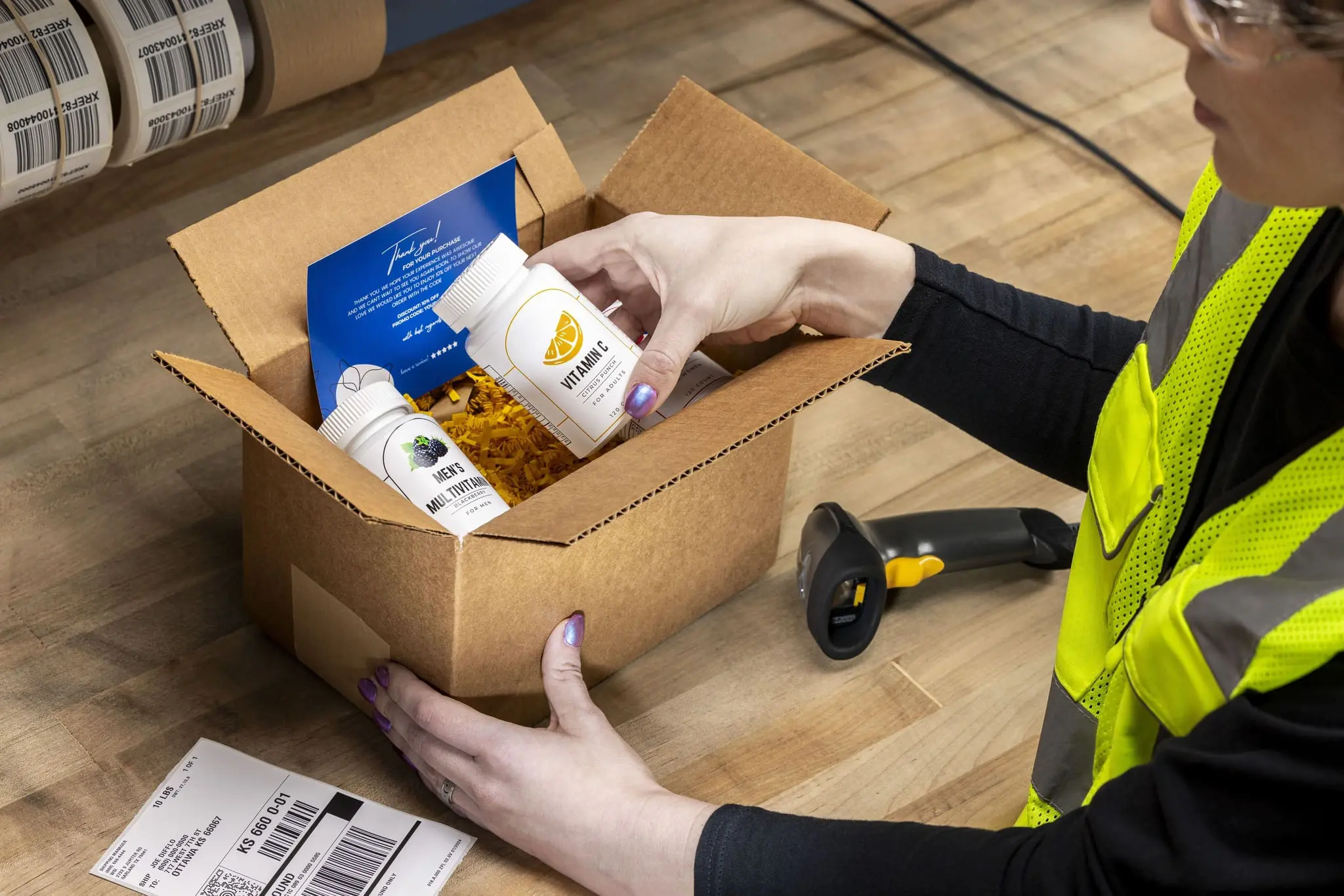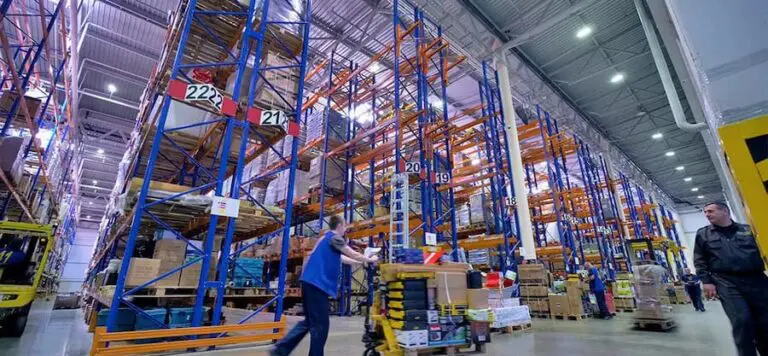Creating a Fulfillment Strategy for Optimal Business Performance
In today’s competitive business landscape, having an efficient and effective fulfillment strategy is essential for success. A well-designed fulfillment process not only ensures smooth operations but also directly impacts customer satisfaction. Whether you’re an Ecommerce retailer, a manufacturer, or a business with unique distribution needs, developing a comprehensive fulfillment strategy tailored to your specific requirements is crucial.
Assessing Your Business Needs
The first step in creating a fulfillment strategy is to identify the unique requirements of your business. This involves understanding your product offerings, target market, and customer expectations. For example, if you’re an eCommerce retailer selling fashion accessories, your fulfillment needs will differ from those of a manufacturer supplying heavy machinery parts to industrial clients. By clearly defining your business needs, you can develop a fulfillment strategy that aligns with your goals and resources.
It’s also essential to consider your customers’ perspective on fulfillment. In today’s fast-paced world, customers expect quick and reliable delivery, easy returns, and transparent communication throughout the process. For instance, if you’re catering to a tech-savvy audience, offering same- or next-day delivery options and real-time order tracking can be a game-changer. On the other hand, if you’re serving a more traditional customer base, providing reliable and cost-effective shipping options may be the priority.
Components of a Fulfillment Strategy
A comprehensive fulfillment strategy consists of several key components, each vital in ensuring smooth operations and customer satisfaction.
Inventory Management
Effective inventory management is the backbone of any successful fulfillment strategy. It involves accurately tracking stock levels, optimizing storage solutions, and ensuring timely replenishment. For example, a fashion retailer may need to manage various SKUs with varying sizes and colors, requiring a robust inventory management system. On the other hand, a manufacturer of industrial equipment may have a smaller product range but require specialized storage solutions for large and heavy items.

Logistics Partners and Shipping Considerations
Selecting the right logistics partners is crucial for efficient order fulfillment. This involves evaluating carriers based on their coverage, pricing, reliability, and specialized services. For example, partnering with a carrier that offers temperature-controlled logistics solutions is essential if you’re shipping perishable goods. Similarly, if you’re catering to a global market, working with a logistics provider with extensive international reach and expertise in customs clearance can streamline your fulfillment process.
Handling and Packaging Processes
How products are handled and packaged plays a significant role in the overall customer experience. Integrating efficient picking, packing, and labeling processes ensures orders are accurately fulfilled and arrive pristine. For example, a beauty brand may require specialized packaging to protect delicate products during transit, while a hardware manufacturer may focus on durable and secure packaging for heavy-duty items.
Technology in Fulfillment
In the digital transformation era, technology plays a pivotal role in optimizing fulfillment operations. Automation and digital systems can streamline processes, reduce errors, and improve overall efficiency.
Automation
Implementing automation solutions, such as robotic picking systems or conveyor belts, can significantly enhance the speed and accuracy of order fulfillment. For example, an Ecommerce retailer with a high volume of orders can benefit from automated sorting and packing systems, reducing manual labor and minimizing human errors.
Software Solutions
Integrating inventory management software and order management systems can provide real-time visibility into stock levels, order status, and shipping details. These solutions can seamlessly integrate with Ecommerce platforms, enabling automated order processing and reducing the risk of overselling or stockouts. For example, a multichannel retailer can benefit from a centralized order management system that synchronizes inventory across various sales channels, ensuring accurate stock levels and preventing overselling.
Managing Resources and Capabilities
Creating an effective fulfillment strategy requires careful consideration of your resources and capabilities. It’s essential to strike a balance between in-house processes and outsourcing to optimize efficiency and cost-effectiveness.
In-House vs. Outsourcing
Evaluating which fulfillment tasks to handle in-house and which to outsource depends on factors such as order volume, product complexity, and available resources. For example, small businesses with limited storage space and a modest order volume may benefit from outsourcing fulfillment to a third-party logistics (3PL) provider. On the other hand, a large enterprise with specialized product handling requirements may prefer to maintain control over the fulfillment process by managing it in-house.
Staffing and Space Requirements
Assessing your staffing needs and available warehouse space is crucial when developing a fulfillment strategy. Consider factors such as peak season demand, product storage requirements, and the skill sets required for efficient order processing. For example, a retailer with seasonal spikes in demand may need to hire temporary staff or expand warehouse space to accommodate the increased order volume.
Customer Service Integration
Integrating customer service into your fulfillment strategy is essential for building customer loyalty and driving repeat business. Aligning your fulfillment processes with customer service goals ensures a seamless and satisfactory customer experience.
Communication
Effective communication throughout the fulfillment process is key to keeping customers informed and satisfied. This includes providing order confirmation emails, shipping notifications, and real-time tracking information. For example, if a customer’s order is delayed due to unforeseen circumstances, proactively communicating the issue and providing an updated delivery timeline can mitigate frustration and maintain trust.
Returns Management
A streamlined returns process is a critical component of excellent customer service. Implementing a hassle-free returns policy and providing clear instructions for returning items can enhance customer satisfaction and encourage repeat purchases. For example, offering free return shipping labels and a generous return window can make the returns process more convenient for customers.
Analyzing and Improving the Strategy
Measuring the effectiveness of your fulfillment strategy is essential for continuous improvement. Establishing key performance indicators (KPIs) and metrics allows you to track progress, identify areas for optimization, and make data-driven decisions.
KPIs and Metrics
Some common KPIs for measuring fulfillment success include order accuracy, on-time delivery rates, inventory turnover, and customer satisfaction scores. For example, tracking the percentage of orders shipped within 24 hours can help identify bottlenecks in the fulfillment process and improve order processing speed.
Continual Improvement
Implementing a continuous improvement framework, such as Lean Six Sigma, can help identify inefficiencies, reduce waste, and optimize fulfillment processes. This involves regularly reviewing performance data, gathering stakeholder feedback, and implementing targeted improvement initiatives. For example, conducting a root cause analysis of recurring order errors can help identify and address underlying issues, improving accuracy and customer satisfaction.
Scalability and Growth
As your business grows and evolves, your fulfillment strategy must adapt to changing market demands and industry trends. Designing a scalable fulfillment infrastructure ensures you can accommodate increased order volumes and expand into new markets without compromising efficiency or customer service.
Aligning with Future Growth
When developing your fulfillment strategy, consider your long-term growth plans and ensure your processes and partnerships can scale accordingly. This may involve investing in technology solutions that can handle increased order volumes, expand warehouse space, or partner with global coverage logistics providers.
Adapting to Market Demands
Staying agile and responsive to changing market conditions is crucial for long-term success. This may involve adapting your fulfillment strategy to accommodate new product lines, emerging sales channels, or shifts in customer preferences. For example, the rise of Ecommerce has led many traditional brick-and-mortar retailers to develop omnichannel fulfillment strategies that seamlessly integrate online and in-store experiences.
FAQs
What steps are involved in creating a fulfillment strategy?
Here are some steps to take when creating a fulfillment strategy
- Assess your business needs and customer expectations
- Identify key components of fulfillment, such as inventory management, logistics, and packaging
- Evaluate technology solutions and automation opportunities
- Determine the balance between in-house processes and outsourcing
- Integrate customer service into the fulfillment process
- Establish KPIs and metrics for measuring success
- Design a scalable strategy that aligns with future growth plans
What are the common pitfalls to avoid when creating a fulfillment strategy?
Consider some of these common issues you should avoid when creating a fulfillment strategy:
- Failing to consider the unique requirements of your business and customers
- Neglecting the importance of inventory accuracy and real-time visibility
- Overlooking the role of technology and automation in optimizing processes
- Underestimating the impact of packaging and handling on customer experience
- Ignoring the potential benefits of outsourcing certain fulfillment tasks
- Failing to establish clear communication channels with customers and logistics partners
- Not designing a scalable strategy that can accommodate future growth
How should businesses measure the effectiveness of their fulfillment strategy?
Measuring the effectiveness of a fulfillment strategy involves tracking a combination of quantitative metrics and qualitative feedback. Key performance indicators (KPIs) such as order accuracy, on-time delivery rates, inventory turnover, and customer satisfaction scores provide valuable insights into the efficiency and success of fulfillment operations. Additionally, analyzing the cost-effectiveness of fulfillment processes by comparing expenses against revenue and customer lifetime value can help businesses optimize their strategies for profitability.
To ensure continuous improvement, businesses should conduct regular audits and process reviews to identify areas for optimization. This can involve benchmarking performance against industry standards and competitors to identify best practices and areas for improvement. Gathering feedback from internal stakeholders, such as warehouse staff and customer service teams, can also provide valuable insights into operational challenges and opportunities for enhancement. Businesses can make data-driven decisions to refine their strategies and drive long-term success by taking a comprehensive approach to measuring and analyzing fulfillment performance.
WSI: Your Trusted 3PL Provider
A comprehensive fulfillment strategy is essential for businesses to thrive in today’s competitive landscape. By assessing your unique needs, leveraging technology, and continually optimizing processes, you can create a fulfillment infrastructure that delivers excellence, drives customer satisfaction, and supports long-term growth. Whether you choose to handle fulfillment in-house or partner with a trusted 3PL provider like WSI, investing in a robust and adaptable fulfillment strategy will position your business for success in the ever-evolving market.
About the Author

WSI Team
WSI is one of the largest privately held 3rd party logistics companies in the U.S. and spans a nationwide distribution network with global logistics reach.








